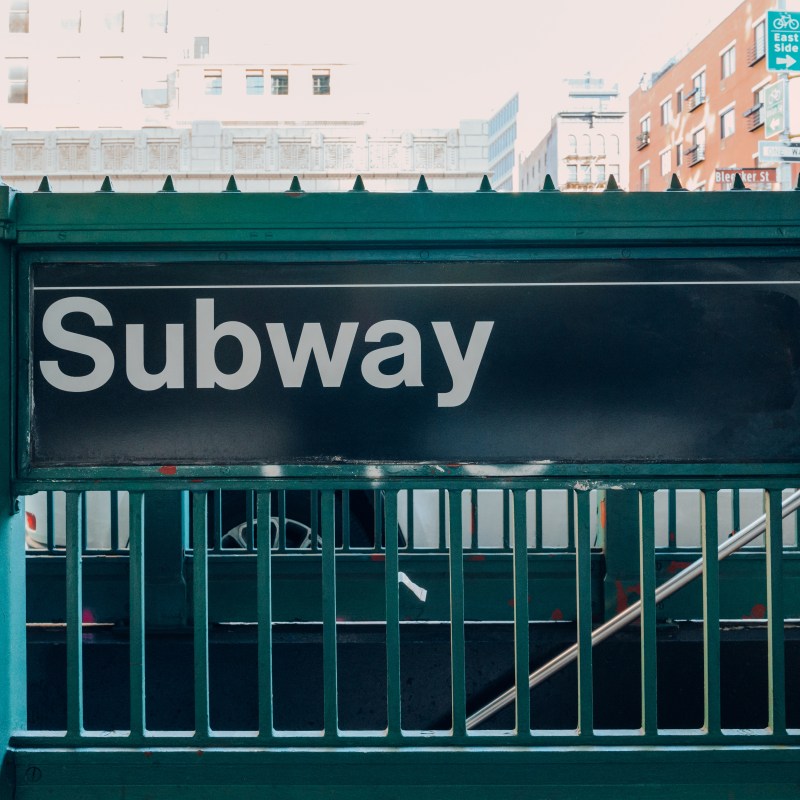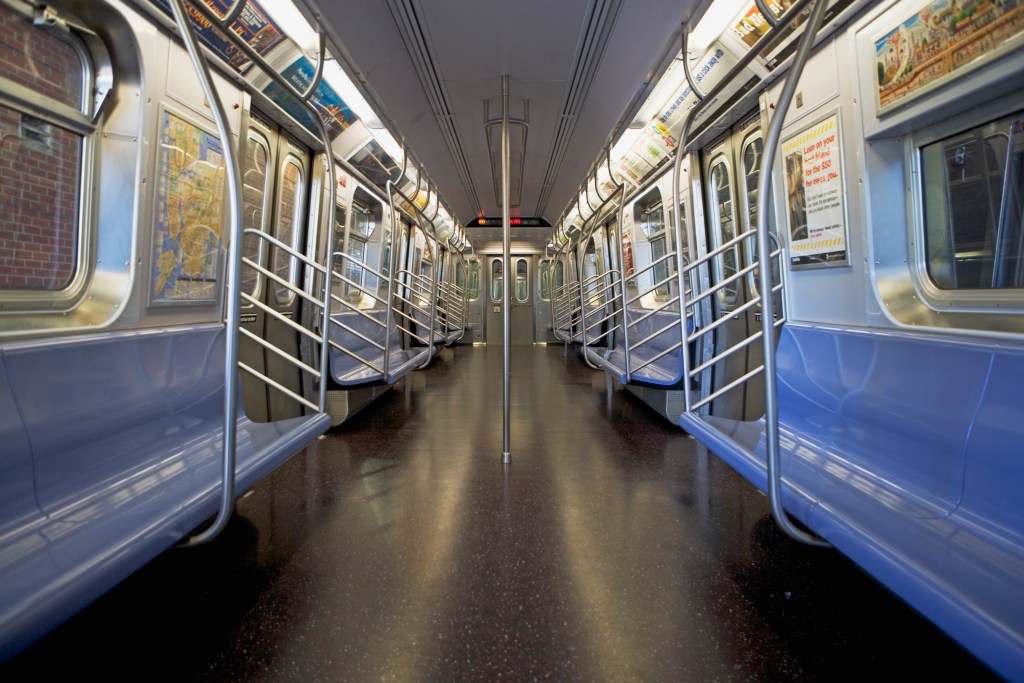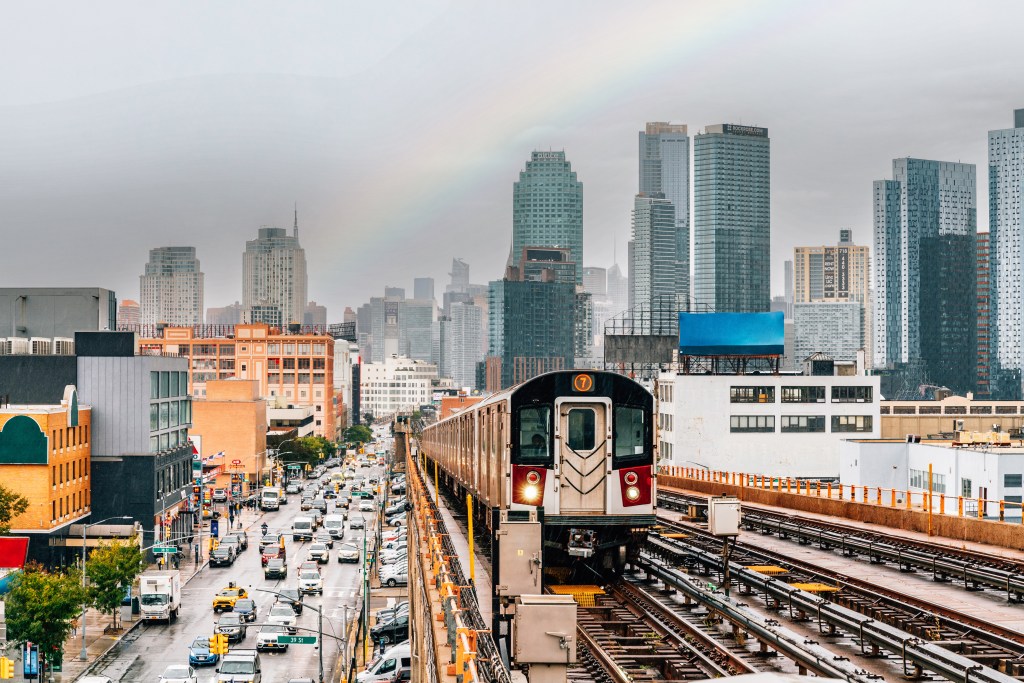
Once upon a time in New York City, I finished my shift in Midtown Manhattan and got on a busy, packed subway train to go home.
Videos by TravelAwaits
I accidentally stepped on the edge of someone’s shoe as I was taking a seat. This person stared daggers at me, their fist clenching and their gaze glowering enough to be felt.
I kept her head down while quietly taking note of which hand the person was clenching in case a brawl happened. (Always look for the dominant hand, my friends!)
At the same time, I was staring at the pair of shoes in question. They were the ugliest pair of shoes I’d seen in a long time—and I couldn’t believe someone was about to start swinging because those shoes got stepped on.
Thankfully, I got off the train without incident.
It wasn’t my first time surviving mayhem on the New York City Subway.
And it wasn’t the most dramatic incident I’ve survived in the subway.
Years before, during my first month in the city, another skinny subway rider and I managed to snag the last open spots in another packed train station in Midtown. A large man sidled over to where we sat, angry that he’d lost his spot to the two of us.
He looked at the man sitting at my side and prattled off one of the most racist things I’ve ever heard in my life. (Stunningly racist.)
He looked at me next and, with a grimace, burped on me. I know it’s a little dramatic to say I was the victim of a biological attack, but I struggle to find the words. I guess I should be happy he didn’t vomit.
Welcome to the New York City Subway, America’s last vestige of the Wild West.
Don’t fear the subway

I hope my two little New York City Subway nightmares haven’t frightened you.In both cases, I was acting a little aggressively to get a seat, which is par for the course for most locals.
That’s not the case for most visitors who are in town for a few days; most are very respectful, meaning you aren’t likely to have any issues on the subway. Millions take it every day without incident.
Still, you might want to know the rules if you want to feel empowered and in-the-know on your next subway ride.
And while you might think you can get around NYC in taxis, that’s not always the case.
New York City’s subway system is one of the most comprehensive forms of public transportation in the United States. Some stations are full of artwork that you’ll want to stare at for a while. Others are home to thieving rats and what look like bio-chemical spills.
Regardless of what the station looks like, the MTA’s trains will take you where you need to go—faster than a taxi, in most cases, and for a sliver of the cost.
In short, you need to know how to take the New York City subway if you’re going to visit. While Google Maps or a similar app can help you figure out which train to take and which station to get off at, I’m focusing on the more ineffable elements of New York City subway culture, like its unspoken rules.
Here’s your crash course on NYC subway rules.
Unspoken NYC Subway Rules

Rule #1: Try not to step on any shoes—and be respectful of space
The thing about stepping on shoes in New York City is that it’s not necessarily about the shoes. (Sure, if they’re brand new and lightly colored, you might enrage someone by dirtying them.) In reality, it’s about respecting someone else’s personal space and belongings.
New York City is incredibly dense, meaning locals go out of their way to be mindful of how much space they take up. If you step on a shoe or bump someone, make eye contact, and apologize—that type of acknowledgement and humility will usually do the job.
Rule #2: Don’t hold the doors
This is one rule that tourists actually tend to break—usually because they’re waiting for someone to board the train and don’t want to get separated, which makes sense.
Always wait until your group is together before jumping on a train.
The New York City subway doesn’t run on time for a range of reasons. Holding the doors will piss off locals and the train conductor, and throw the timetables even further off schedule. You might even be pulled away from the doors.
Rule #3: Stand aside to let people off before getting on
Clear the doors so that people can exit the train before you try to get on. Stand all the way to the side so that passengers can get off. This isn’t an unspoken rule by any stretch—you’ll see quite a few reminders.
I’m just letting you know that people exiting the train probably won’t be polite if you’re in the way. As in, you might get bowled down.
Rule #4: Give up your seat
If you see anyone who has mobility issues or looks uncomfortable, it’s common courtesy in New York City to give up your seat. The younger and healthier you are, the more expected it is for you to give up your seat.
By contrast, if it’s a busy subway car and everyone looks mobile and healthy, you’re allowed to be cutthroat to nab the last seat. Just watch out if you beat a businessman in Midtown to the punch—there’s at least one man in New York City who burps at his enemies.
Rule #5: If no one is in that subway car, it’s for a reason
Probably a really, really stinky one. Don’t think you’ve discovered Eden when you find an empty subway car. There’s probably someone in there, and they’ve likely claimed the space with their scent.
Rule #6: If you see someone who needs help, offer it
Local New Yorkers tend to stop to help mothers with strollers and bags get up and down the stairs, because many subway stations don’t have elevators. The same for elders who are carrying large bags—or, really, anyone who needs the help. You won’t be viewed as weird for offering to help.
Rule #7: Don’t put your feet up if someone is in the seat next to you
You can put your feet up on the subway seats—the New York City subway makes no claims at being clean. That being said, be mindful about when and where you put your feet. Once again, it’s about respect and personal space.
Don’t put your feet on a seat if someone is seated beside them—it’s a little too close for comfort. Similarly, if you have your feet on a seat, take them down when you reach a busy subway station.
Rule #8: Respect the quiet—but expect some noise, especially during Showtime
Here’s one of the most precious NYC subway rules: if the train is nice and relaxed, especially before 10 am, don’t be noisy and mess up the vibe.
You might be stunned to find that New York City subways are usually silent during the morning commute, often up until 10 or even 11 am. Don’t be the one to ruin it.
By contrast, you should expect noise at pretty much any other time of the day.
‘Showtime’ is the informal name for performers who take to subway cars to dance, sing, and otherwise delight/terrify commuters before asking for tips. There are different tiers to performers: New Yorkers usually adore the old-timey singers, respect the young and athletic dancers (these are the Showtime guys), and hate the acoustic guitarists. Don’t ask me why.
If you see the old-timey singers, take a video and tip them well—they’re a staple of the New York City subway that lightens everyone’s day. The same for the Showtime guys—they’re athletic acrobats!
Rule #9: Look elsewhere
New York City subway commuters are experts at avoiding eye contact. I think anyone who spends a lot of time on public transportation is pretty good at avoiding eye contact—just know that you’ll be expected not to stare or make too much eye contact with people while commuting. Again, it’s about personal space and respect in a city as dense as NYC.
Rule #10: People might ask you to ‘swipe’ them through—it’s normal
Subway cards (called MetroCards) are constantly changing, but if you have an unlimited MTA prepaid card, you might notice people asking you to ‘swipe them through’ when you exit. As in, you’re leaving via the stall and they’re on the outside, asking you to use your card to let them enter the subway.
This is totally normal because it won’t cost you a thing to swipe someone through if you already have an unlimited pass; you can swipe through any station after 18 minutes have passed since your last swipe. I always had one with me, and always swiped people through if I could.
Subway entries also have emergency exit doors. You can open these, and an alarm (usually) won’t sound, meaning some people open them to let others through so they can get a free ride.
One way to do this casually is to exit through the emergency door and then let it swing shut behind you; someone will likely catch the door before it closes and head to the platform. It won’t look like your fault at all, as commuters who have strollers or large bags always have access to the emergency exit door.
Here’s my point: you don’t need to share your swipes or let someone through the emergency door, but don’t worry if you see it happening or if someone asks you. It’s the Wild West, remember?
